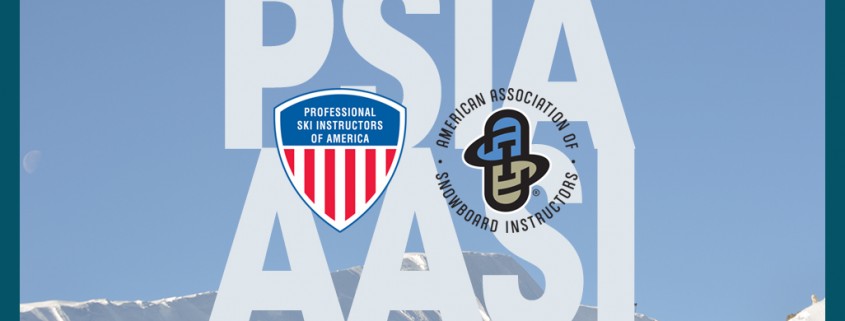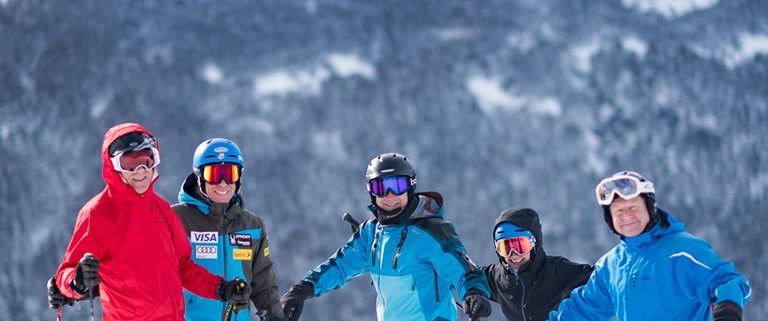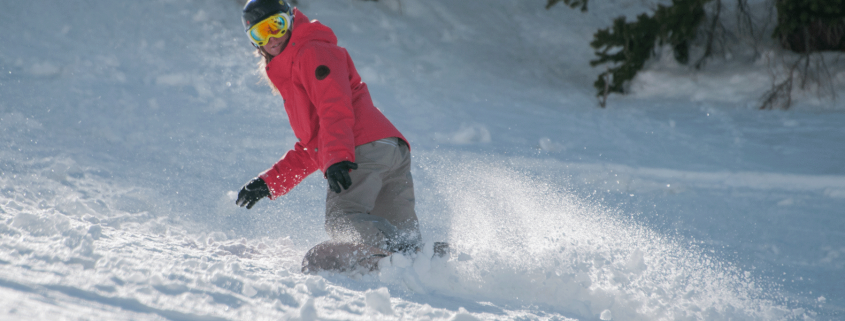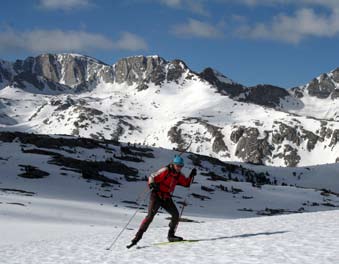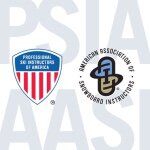Interski’s Value to Me – By Jim Tress
I had a blast! And I learned much from the demos, the lectures, and the people. Interski was about information sharing, embracing different perspectives, and collaboration. As I reflected on the whole experience, I asked myself – What did I really get out of this? What did I really take away from this? And how can I take what I’ve learned to improve my skiing and teaching?
A New Geographic and Cultural Experience
Although I’m a fairly well experienced global traveler, I hadn’t previously traveled to Argentina, so it was a new geographic and cultural experience. Ushuaia is the southernmost city in the world, located at the very southern tip of Argentina and the continent. They appropriately title themselves as “End of the World” – it’s catchy and the natives are proud of the title. The penguin is their mascot. The Andes Mountains are jagged and stunning and I was continuously in awe of the beauty and visual impact. The people are warm, friendly, and accommodating. The food is appetizing and the beef is excellent – Argentina is known for its beef and I consumed slabs of Argentine protein every day while there. And I can’t forget to mention the wine – they have some tasty Malbecs. If you enjoy wine, try a Malbec. Argentinians dine late – I felt like I was in southern Europe – so we did as the Argentinians did – we typically arrived at a restaurant at 8:30PM and didn’t wrap up dinner and conversation until 10PM or later.
Met New People from Around the World and Made new Friends
I met so many new people from National Demo Teams and the Companion Delegation. It’s always great meeting people from different geographic, cultural, academic, and professional backgrounds. I enjoyed meeting all of our Demo Team members. Everyone was very engaging and very appreciative that we were there to support them. It’s great to be appreciated and it was a privilege and an honor to be a member of the US Companion Delegation. Thanks to social media, I will be able to keep in some contact with many of the Interski community.
I want to thank the following people for helping me to have a truly great experience in Ushuaia and at Interski:
Mike Hafer, National Demo Team, for encouraging me to “name drop” his name and for suggesting that I observe certain National Demo Teams and their movement patterns.
A big thanks to Ron Kipp, Alpine Sport Education Manager, USAA, for being my roommate, taking me under his wing, and introducing me to so many people. Ron is an extremely knowledgeable guy, a great coach, a great asset and ambassador to skiing, USAA, and PSIA.
My dining team – Ron Kipp, Grant Nakamura, Becky Sender, and Michael Drake. We had great dinners, great wine, great skiing, and great conversations about many subjects – thanks for including me and tolerating me.
Penn State Alums Kim Seevers (National Adaptive Team Coach) and Eric Lipton (National Demo Team) – it was great meeting and creating friendships with two Alums – We Are Penn State and we are everywhere!
Practice Synchronized Skiing/Riding
It was a real eye opener to observe the demonstrations of all the participating countries. The Demonstrations were from 9:30-11:30am each morning. I’ve never been in a situation where there was such a collection of ski/ride talent. It was exuberating and humbling to be on the mountain and in clinics with National Demo Teams from 35+ countries. All of the demonstrations were entertaining and great – some were greater than others. What I learned from both observation and attempt is that synchronized skiing/riding is extremely challenging and that we can all benefit from practicing it. It’s not that I didn’t previously know this, but actually trying this with some of the Companion Delegates drove it home. Encourage your ski and snowboard school trainers to conduct a clinic(s) on synchronized skiing/ riding. It’s challenging – it requires visual cues, focus, patience, discipline, timing, practice, and more. But it’s fun, you’ll learn much, and it can improve your skiing/riding and teaching.
Austria’s WIR (Watching-Inside View-Reflection) Concept
I attended clinics/workshops conducted by Hungary, Switzerland, Germany, and Austria. They were all great clinics and I learned new approaches, lesson ideas, and exercises from each one. The clinic that resonated best with me was Austria’s WIR Concept (pronounced “Veer” and is the German expression for “We”). It was quantitative in nature so it resonated with my academic and professional backgrounds in Aerospace Engineering and Finance. I was also fortunate because only one other person and myself were in the clinic and we had two clinicians working with us. Watching – the student and instructor together determine a common scale and language for watching each other perform various tasks. Inside View – the student experiences their own motions according to the scale (this is like “calibrating” the scale). Reflection – provide specific feedback to the student based on the scale. Thus, the WIR Concept applies a scale and terminology, task, and specific/quantifiable feedback. I have already used this concept in a lesson this year and will continue to do so.
Focus on the Student Experience, Simplify, Provide Feedback, Motivate
These were the common elements that I extracted from the lectures that I attended. I attended lectures conducted by Canada, Finland, Switzerland, Austria, Germany, Italy, Slovenia, and United Kingdom. The topics were varied and there was a lot of information to absorb. The lectures consisted of two per evening, from 5:30-6:00PM and 6:00-6:30PM, and were held at various hotels throughout town. I attended lectures based on topic first, country, and hotel locations. There was no time from the end of the first lecture to the beginning of the second lecture, so hotel locations were important.
Motivating
Skiing and instructing, collectively, is a hobby for me. I consider myself a student of both and a work in progress. I continually attend lectures and clinics so I may continue my professional development. Interski has motivated me to formulate a training plan and schedule for this season to maximize my development. As a busy Bay Area professional, the demands on my time make time a premium asset. Since my training is basically limited to weekends, this plan will enable me to better manage my time, incorporate discipline, structure, and provide me something tangible against which to execute.
Interski is Worth Attending Again
Interski Ushuaia was a rare and unique opportunity to grow my knowledge and skills, collaborate with professionals from 35+ countries, and make new friends/acquaintances. We have many great venues for learning and fun within our industry and I believe Interski is one of the greatest – It’s an experience like no other in our industry. Interski 2019 will be held in Pamporovo, Bulgaria. I encourage you to consider attending. Hopefully, I will have the time and resources to attend again.
Jim Tress is PSIA Certified Alpine Level ll, Senior Specialist l instructor at Alpine Meadows/Squaw Valley. Email: jftress@gmail.com

